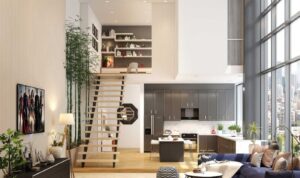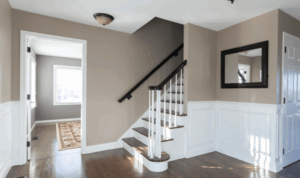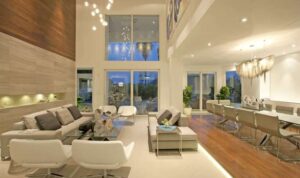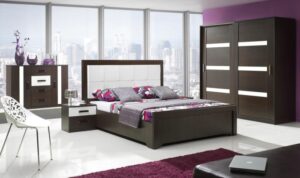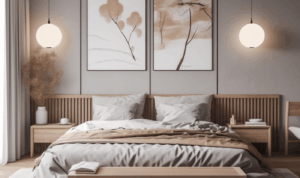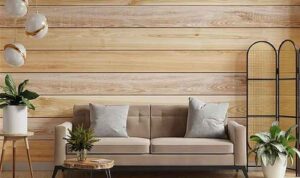Delving into modern kitchen interior design, this introduction immerses readers in a unique and compelling narrative. It covers the key elements, functionality, color schemes, and popular materials used in modern kitchens.
It also discusses layout options, space optimization, the role of kitchen islands, lighting importance, fixtures, appliance trends, and technology integration in modern kitchen design.
Overview of Modern Kitchen Interior Design

Modern kitchen interior design focuses on sleek, clean lines, minimalistic aesthetics, and functionality. It incorporates the latest trends in kitchen technology and design to create a space that is both visually appealing and practical.
Key Elements of Modern Kitchen Interior Design
- Minimalistic Design: Modern kitchens often feature simple, clutter-free designs with an emphasis on open space.
- Sleek Surfaces: Smooth surfaces like stainless steel, glass, and lacquered wood are commonly used in modern kitchens.
- High-Tech Appliances: Integration of smart appliances and innovative technology for efficiency and convenience.
- Ample Storage: Clever storage solutions to maximize space and keep the kitchen organized.
Importance of Functionality in Modern Kitchen Design
Functionality is crucial in modern kitchen design as it ensures that the space is not only visually appealing but also practical for everyday use. Features like ergonomic layouts, easy-to-access storage, and efficient workflow are prioritized to enhance the overall cooking experience.
Typical Color Schemes in Modern Kitchens
- Neutral Palette: White, grey, and black are commonly used as base colors in modern kitchens to create a clean and timeless look.
- Pop of Color: Bright accent colors like red, blue, or green are often incorporated through accessories or cabinet finishes to add personality to the space.
Popular Materials for Modern Kitchen Countertops and Cabinets
- Quartz: Durable, low-maintenance, and available in various colors and patterns.
- Wood: Adds warmth and natural texture to the kitchen, with options like oak, walnut, or bamboo.
- Glass: Sleek and modern, ideal for cabinet doors or backsplashes to create a reflective surface.
Layout and Space Optimization
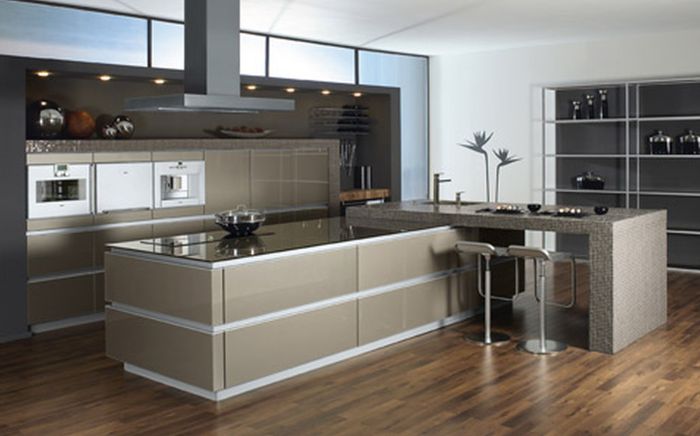
When it comes to modern kitchen interior design, the layout and space optimization play a crucial role in creating a functional and visually appealing space. By carefully planning the layout and maximizing the available space, you can create a kitchen that is both efficient and stylish.
Layout Options in Modern Kitchen Design
- Galley Layout: This layout consists of two parallel countertops with a walkway in between, making it ideal for small spaces and maximizing efficiency.
- L-Shaped Layout: This layout utilizes two adjacent walls to create an L-shaped configuration, providing ample countertop space and storage options.
- U-Shaped Layout: Perfect for larger kitchens, this layout features three walls of cabinets and countertops, offering plenty of storage and work areas.
- Island Layout: Incorporating a kitchen island into the design can provide additional countertop space, storage, and a casual dining area.
Tips for Optimizing Space in a Modern Kitchen
- Utilize Vertical Storage: Install tall cabinets or shelves to make use of vertical space and keep countertops clutter-free.
- Choose Multi-Functional Furniture: Opt for kitchen furniture that serves multiple purposes, such as a dining table with storage underneath.
- Use Light Colors: Light colors can help make a small kitchen feel larger and more open, creating a sense of space.
The Role of Kitchen Islands
A kitchen island can serve as a focal point in a modern kitchen, providing additional workspace, storage, and seating. It can also help create a seamless flow between different areas of the kitchen, such as the cooking, prep, and dining areas.
Creating a Seamless Flow
To ensure a seamless flow in a modern kitchen, consider the following:
- Positioning: Place appliances and work areas in a logical sequence to facilitate movement and efficiency.
- Consistent Design: Maintain a cohesive design scheme throughout the kitchen to create a harmonious look and feel.
- Open Concept: If possible, opt for an open concept layout to connect the kitchen with other living spaces, promoting interaction and a sense of spaciousness.
Lighting and Fixtures
The lighting in a modern kitchen plays a crucial role in enhancing the overall design aesthetic and functionality of the space. Proper lighting can create a welcoming ambiance, highlight key features, and provide adequate illumination for various tasks.
Importance of Lighting in Modern Kitchen Interior Design
Lighting is a key element in modern kitchen design as it can enhance the visual appeal, create a warm and inviting atmosphere, and improve functionality.
Different Types of Lighting Fixtures Suitable for Modern Kitchens
- Recessed Lighting: Provides ambient lighting and can be used to highlight specific areas.
- Pendant Lights: Adds a decorative touch and can be used over kitchen islands or dining areas.
- Under Cabinet Lighting: Offers task lighting for food preparation and cooking.
- Track Lighting: Provides flexibility in directing light and can illuminate different areas of the kitchen.
Tips on How to Incorporate Natural Light into a Modern Kitchen
Natural light can enhance the overall ambiance of a modern kitchen and reduce the need for artificial lighting during the day. To incorporate natural light:
- Install large windows or skylights to allow natural light to flood the space.
- Use light-colored window treatments to maximize the light entering the kitchen.
- Position work areas near windows to take advantage of natural light for tasks.
Creating a Balance Between Task Lighting and Ambient Lighting
Creating a balance between task lighting and ambient lighting is essential in a modern kitchen to ensure functionality and aesthetics. To achieve this balance:
- Use recessed lighting or track lighting for ambient lighting throughout the kitchen.
- Incorporate under cabinet lighting or pendant lights for task lighting in specific work areas.
- Consider dimmable lighting options to adjust the intensity based on the time of day and specific tasks.
Appliances and Technology Integration
When it comes to modern kitchen design, integrating the latest appliances and technology is essential for both functionality and aesthetic appeal. Let's explore some of the trends and innovative ways to incorporate appliances seamlessly into a modern kitchen.
Trends in Kitchen Appliances
- Smart Appliances: The rise of smart technology has led to the development of appliances that can be controlled remotely via smartphone apps or voice commands.
- Steam Ovens: Steam ovens are becoming increasingly popular for their ability to cook food more evenly and retain nutrients.
- Induction Cooktops: Induction cooktops are energy-efficient and provide precise temperature control, making them a popular choice for modern kitchens.
Integration of Smart Technology
- Smart Refrigerators: Refrigerators with touchscreens and cameras allow you to see what's inside without opening the door, reducing energy waste.
- Voice-Activated Assistants: Integrating voice-activated assistants like Alexa or Google Home can help you control appliances and set timers hands-free.
Innovative Appliance Concealment
- Appliance Garages: Conceal appliances like toasters and coffee makers in retractable cabinets to keep countertops clutter-free.
- Panel-Ready Appliances: Opt for panel-ready appliances that blend seamlessly with your cabinetry for a cohesive look.
Energy-Efficient Appliance Selection
- Look for ENERGY STAR certified appliances to ensure they meet high energy efficiency standards and help you save on utility bills.
- Opt for appliances with features like eco modes and dual fuel options to reduce energy consumption without compromising performance.
Last Word
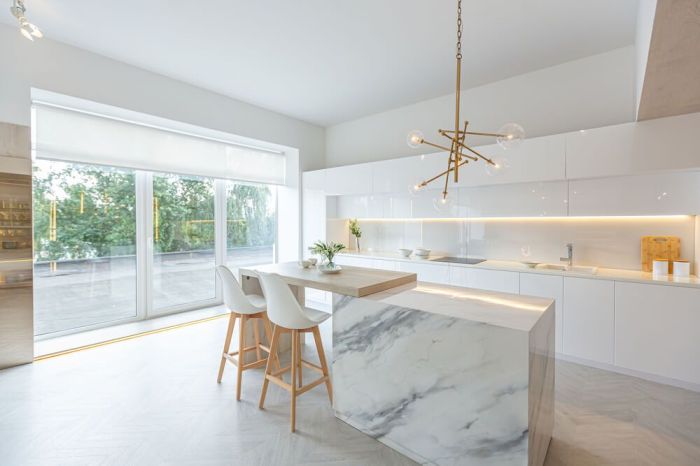
In conclusion, modern kitchen interior design combines functionality with aesthetic appeal to create beautiful and efficient spaces for cooking and gathering. The seamless flow between different areas, smart technology integration, and innovative appliance concealment techniques all contribute to a modern kitchen's charm.
FAQ Section
What are the key elements of modern kitchen interior design?
Key elements include sleek surfaces, minimalist design, and advanced technology integration.
How can natural light be incorporated into a modern kitchen?
Natural light can be maximized by using large windows, skylights, and light-colored surfaces to reflect light.
What are some popular materials for modern kitchen countertops?
Popular materials include quartz, granite, marble, and stainless steel for a modern and sleek look.
How to optimize space in a modern kitchen?
Space can be optimized by using smart storage solutions, decluttering, and choosing multi-functional furniture.
What is the importance of lighting in modern kitchen interior design?
Good lighting enhances the overall ambiance, highlights design elements, and improves functionality in a modern kitchen.

